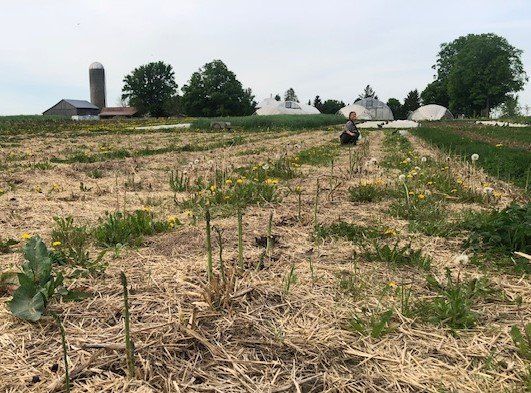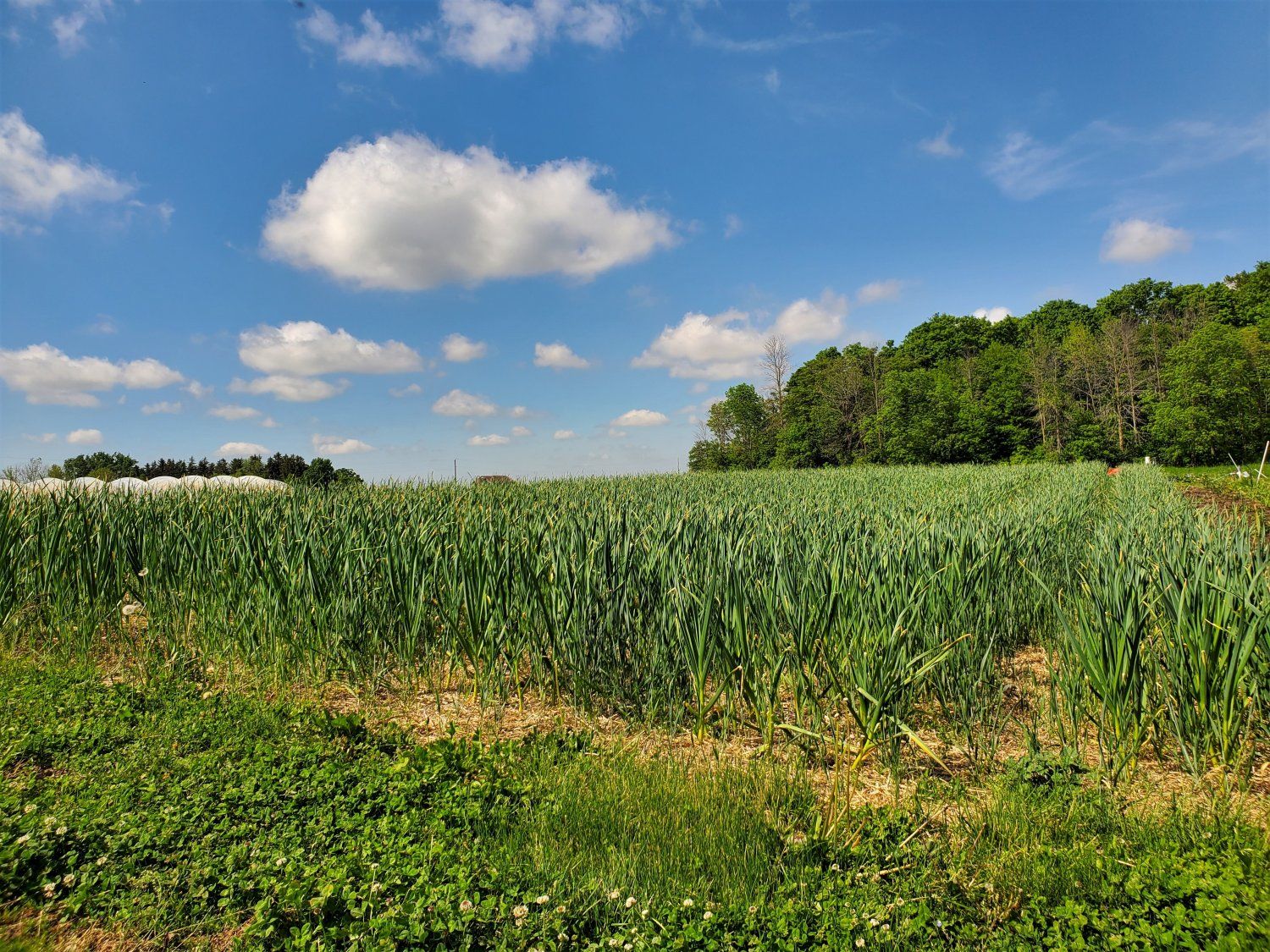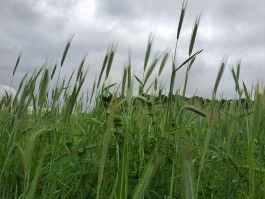June 3, 2021
The Lettuce Rejoice!
Firmly Rooted Farm's Newsletter for their Veggie Loving Farm-ily

On the Farm: Running for Cover
Hello again my veggie loving friends,
As I sit down to write this newsletter, I hear the birds chirping after a nice light rain. I would chirp along with them, out of joy for the much anticipated precipitation. Farming is a dance with nature. Sometimes a waltz, sometimes a tango, sometimes interpretive. We don’t always know where we’ll be lead, the dance floor might be rough, but sometimes we’re Jennifer Grey being lifted into the air by Patrick Swayze, gloriously soaring, for a moment. The weather has felt interpretive lately, the forecast a light suggestion. But today is a good day for rain, and we are more than happy to not need to irrigate for a little while.
Recently nature had me dancing with an unexpected partner; a female killdeer unwittingly laid her eggs right where the winter squash was to be planted. Four tiny eggs making all the difference in a very well thought out crop plan. She squawked and chirped, calling for me, bidding me away from the nest, swinging her “lame” wings, tempting me with herself as a tasty snack. I did not bite, but we did make accommodations for her eggs. Soon they will hatch and run fervently from the nest but until then, she sits diligently, unwavering in her devotion to their fragile lives, and we plant no squash in that area. It’s a compromise, but the alternative is a dance we’d rather not step.
Indeed, we’ve been putting more plants in the ground lately, but also removing old crops and have recently terminated much of our winter cover crops. Cover crops are an integral part of the Firmly Rooted crop plan. An important goal for the farm is to cover the soil all of the time, whether it be with a harvestable crop, cover crop, or tarp (for plant termination). We aren’t there yet, but we are making progress. A cover crop may also be regarded as a service crop since its purpose is to provide an ecological service to a farming ecosystem rather than simply harvested for monetary gain. There is great value in these service crops; they create conditions for water flow, nutrient flow, soil biodiversity, and carbon sequestration.
Water flows through soil by gravity (downward) and capillary action (upward). Plants exude sugars from their roots that feed biology which in turn create the “glues” that make the pore structure that allows water and air to flow. Plants also move water from the soil to the leaves, resulting in evaporation, another part of a mini water cycle. Cover crops also provide shading that cools the soil and slows surface evaporation.
Nutrient flow is increased because several plant species assist in the processes that increase nutrient availability. For example, legumes, such as vetch and peas, convert unavailable nitrogen compounds to readily available nitrogen, in a process called nitrogen fixation. Thus cover cropping utilizes naturally occurring nutrient cycles, working with nature to improve soil and crop health.
Cover crops also greatly improve soil biodiversity. Maintaining living roots within the soil creates conditions to sustain life. All plants are a food source and habitat for soil microbiology. By building microbiology, you increase the diversity of life above and below ground.
Carbon sequestration is a process that harvests carbon from the atmosphere and deposits it into the soil. One way cover crops deposit carbon back into the soil is through decomposition; the plant is purposefully not removed from the field, for this reason, the plant must be reintegrated back into the soil. But cover crops also remove carbon from the atmosphere while they are living, depositing far more carbon back into the soil throughout their life when compared to the decomposition processes. Increased atmospheric carbon is a major factor in climate change, this atmospheric imbalance of carbon came from the soil, carbon sequestration puts it back. Plus, increased organic matter feeds the microbes as well as the crops we harvest for food.
Referred to as service crops, green fertilizer, or living mulch, cover crops provide numerous benefits that cannot all be achieved by conventional fertilizers or soil amendments. Some cover crops are even allelopathic, meaning they release phytotoxic compounds that inhibit the growth of other plants such as undesired weeds. We have grown several crops as cover; oats, field peas, buckwheat and tillage radish (known as daikon radish culinarily) to name a few. In the feature photo for this week you can see some vetch, a nitrogen-fixing legume, and rye, which grew taller than Jack before it was terminated and tarped, to be returned to the earth.
Kitchen Corner
We will have lots of arugula this week! Arugula is a lovely spicy green with diversity and flavour. It’s been cultivated for longer than you may guess, with the ancient Romans and Egyptians regarding the plant as an aphrodisiac. Also known as rocket, it's deliciously enjoyed mixed with other greens or on its own in salads, on sandwiches, or even in smoothies. My personal favourite way to enjoy arugula is piled high on a piping hot traditionally made Italian pizza.
Kitchen Clean-Up
The spring CSA is moving into its last week! The summer CSA kicks off the week of the 7th. If you have a summer share with us, please double check that your drop off location is correct and your account is paid off. We also still have lots of seedlings, although are getting low on some plants! Check online for available selection: https://www.harvie.farm/farm/firmly-rooted-farm/shop.
That’s all for now folks, happy eating until next time!
Farmer Erika




